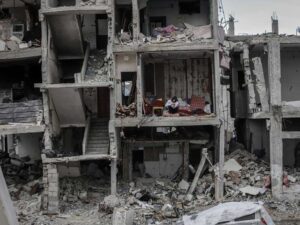
Quebec’s government is imposing a nighttime curfew that will begin on New Year’s Eve in an attempt to reduce the high transmission of COVID-19 across the province and ease pressure on the hospital network.
The curfew will run from 10 p.m. to 5 a.m. for an indefinite period of time, Premier Francois Legault told reporters Thursday in Montreal.
“In the coming weeks, there is a risk that the number of hospitalizations will exceed our capacity,” Legault said, adding that COVID-19-related hospitalizations, which stood at 939 on Thursday, had doubled in one week.
Health officials reported a record 14,188 cases on Thursday, and Legault said the province will report more than 16,000 new cases on Friday.
“It’s an extreme action to take,” Legault said, “because the situation is extreme.” He said when the situation is under control the curfew would be the first health order the government would remove.
Legault added a series of other restrictions. On Friday, restaurants must close their dining rooms and serve takeout only, and indoor private gatherings will be banned, he said. Gyms, bars and other entertainment venues have been closed since last week.
He also announced that schools, junior colleges and universities won’t reopen to in-person classes until at least Jan. 17. Places of worship will have to close on Friday except to hold funerals, which will be limited to 25 people.
“We have to act rapidly _ the situation is evolving rapidly,” Legault said. “As deciders, we have the responsibility to act; we can wait for all sorts of studies and more details, but it’s better to act and adjust a little later.”
The province first imposed a curfew during the pandemic on Jan. 9, 2021, and only lifted the health order on May 28. Quebec is the only province in Canada to have imposed a curfew during the pandemic.
Earlier Thursday, the research institute that reports to the government, Institut national d’excellence en sante et en services sociaux, said its modelling predicted “significant growth in new hospitalizations and the consequent occupancy of regular and intensive care beds over the next three weeks.”
It said its models indicated there could be between 1,600 and 2,100 COVID-19 patients outside intensive care over the next three weeks. The institute said the number of intensive care patients during that period could be between 300 and 375. The more pessimistic scenarios _ 2,100 regular COVID-19 patients and 375 intensive care patients _ would surpass anything recorded during the previous waves of the pandemic.








